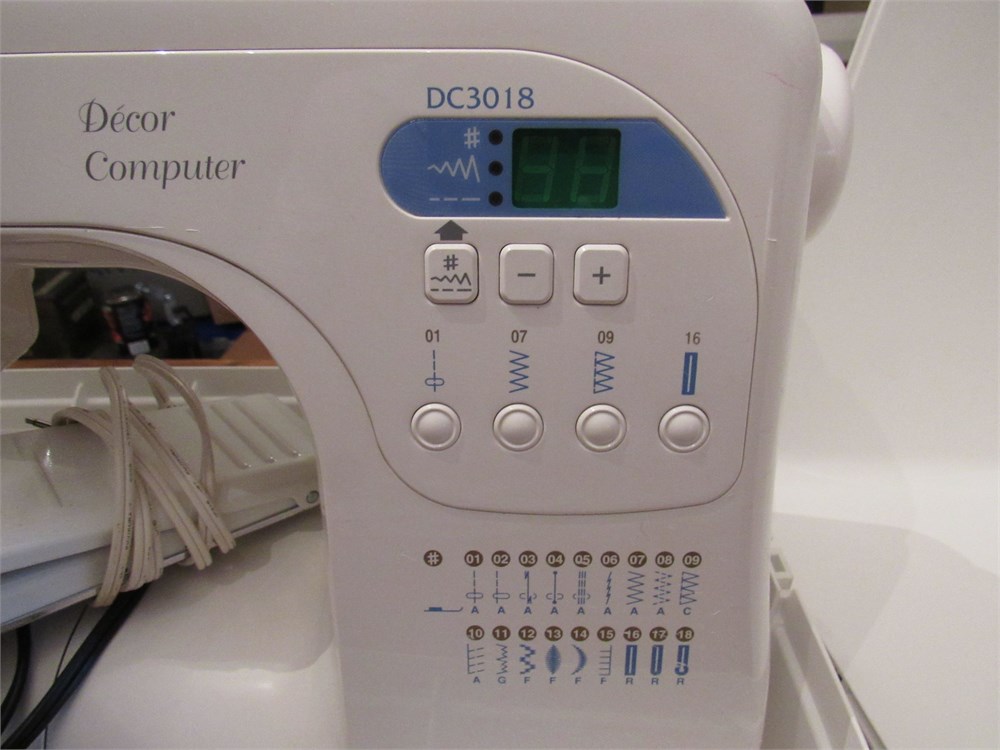

Mark the placement with at least four pins before removing the cover from the machine. Place the cover as is on your machine and determine where the handle opening should be located. Get started on the handle opening by finishing the handle facing’s four edges with a 1/2-inch, double-rolled hem. Once the main cover’s edges are gathered, attach the side pieces.ġ0. Sew the sides in place with a 1/2-inch-wide seam allowance. The main cover’s fold also should align with the side piece’s peak. With right sides together, and bottom edges aligned, pin one side piece to either side of the main cover. Gently pull the thread to gather the basting stitches. Prepare to attach the side pieces to the main cover by adding gathering stitches to the edges.ĩ. Sew two rows of basting stitches close to the side edges beginning 6 inches before the fold and continuing 6 inches after the fold, for a total of 12 inches. To determine where to place the basting, fold the main cover piece in half lengthwise. Add two rows of basting stitches to the main cover where it will join with the curved side pieces. However, if you have a square-shaped machine, you can eliminate this step as well as the gathering sections in steps 8 and 9.Ĩ. This adjustment will enable the cover to better fit the machine’s curvature. Reflect the curve along the piece’s center. Use a fashion ruler or another curved object as a guide to draw a slight curve at the top of the side pieces. Note that the bias binding runs along the pocket’s top edge.ħ.

For extra strength, sew a second line of stitching 1/4 inch above the edgestitching. Baste the pocket’s two short sides in place before edgestitching the pocket’s bottom edge. With right sides up, place the pocket 1 inch from the main cover’s bottom edge. The stitching should be barely visible from the right side.Ħ. Stitch-in-the-ditch from the pocket’s right side, being sure to catch the fold as you sew. The fold should sit just below the seamline on the wrong side. Push the bias tape up toward the seam allowances, then fold its top edge down to the pocket’s wrong side. Instead of making your own bias tape, you may use commercial bias tape and follow the manufacturer’s application instructions.ĥ. Sew the bias strip to the pocket with a 1/4-inch-wide seam allowance. With the pocket right side up, align the folded bias strip’s raw edges with the pocket’s raw edges. Fold the bias strip in half lengthwise, with wrong sides together. Cut a 2-inch-wide bias strip to the pocket’s width dimension. Fold the pocket piece in half lengthwise, with wrong sides together.Ĥ.

For the facing, cut interfacing the same size, and fuse it to the facing’s wrong side.Ī) Main cover: Length = sewing machine depth + 2x the sewing machine height Width = sewing machine width + 1 1/2 inchesī) Sides (cut 2): Length = sewing machine height + 1/2 inch Width = sewing machine depth + 1 inchĬ) Pocket: Length = 2x (foot control width + 2.5 inches) Width = sewing machine width + 1 1/2 inchesĭ) Handle opening facing: Length = handle length + 4 inches Width = handle width + 4 inchesģ. To determine the dimensions for each piece, plug in the measurements from above to the equations below. There are five pieces in total: the main cover, the sides (cut 2), the pocket, and the handle opening facing. Measure and record the following dimensions:īe sure to begin measuring from the tallest part.Ģ. Then, take the machine’s measurements, as described below. To get started, choose a base fabric and a coordinating fabric for the binding.
#Desktop covers for sewing machines Patch
A sewing machine cover adds a pop of color to your sewing room, but more importantly, it protects your machine from dust and debris while it’s not in use. The following customized cover features a large front pocket for the foot control and various sewing essentials, a top opening for the carrying handle, and a decorative appliquéd patch to set your cover apart. Start off the new year right by making a protective covering for one of your most prized possessions–your sewing machine.

You also may want to fuse and quilt the main cover and side pieces with fusible fleece for extra padding. If you'd rather make a more durable cover, canvas, vinyl, or denim are great options. I used 100-percent cotton fabric to make this decorative cover.


 0 kommentar(er)
0 kommentar(er)
